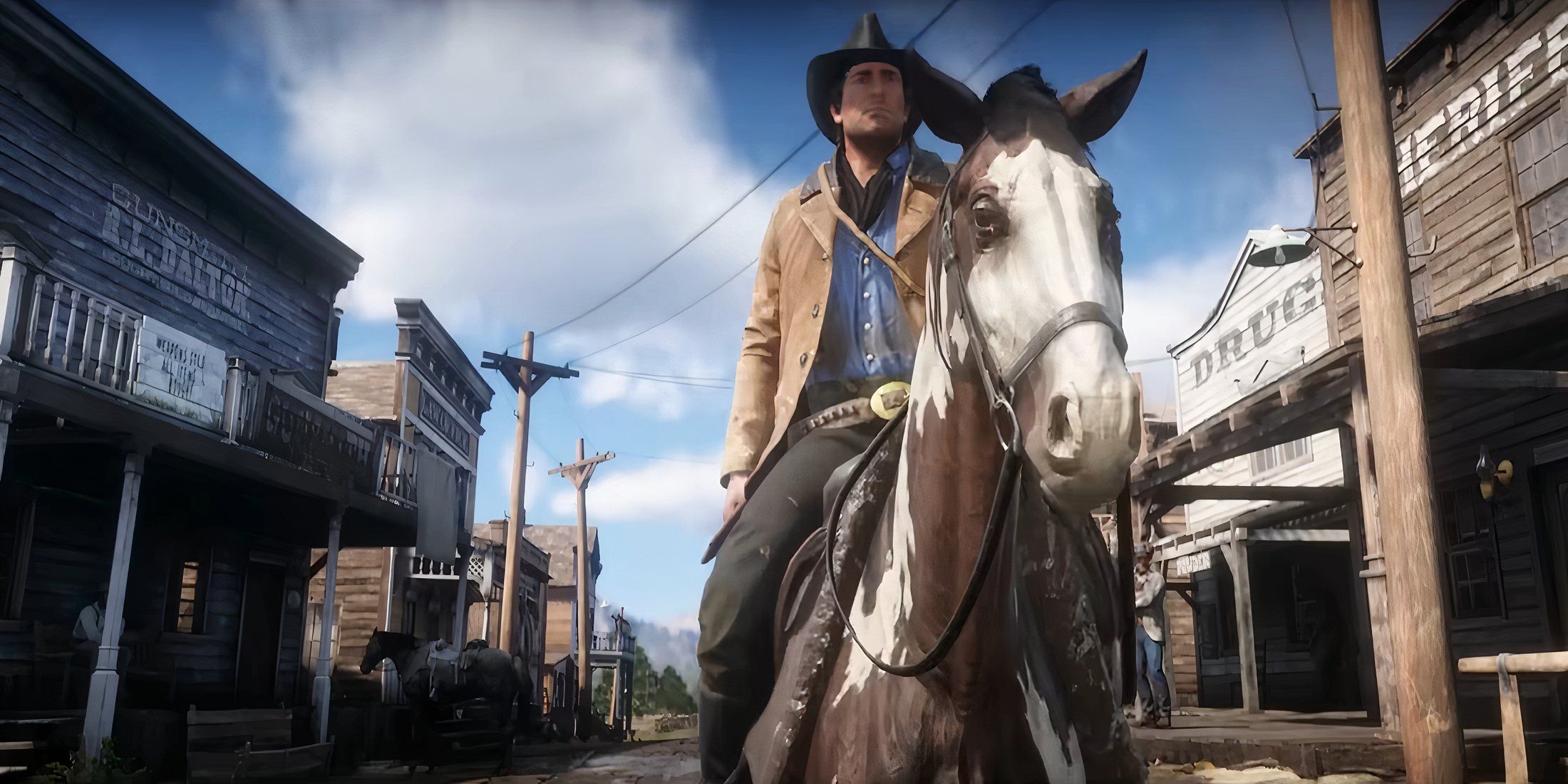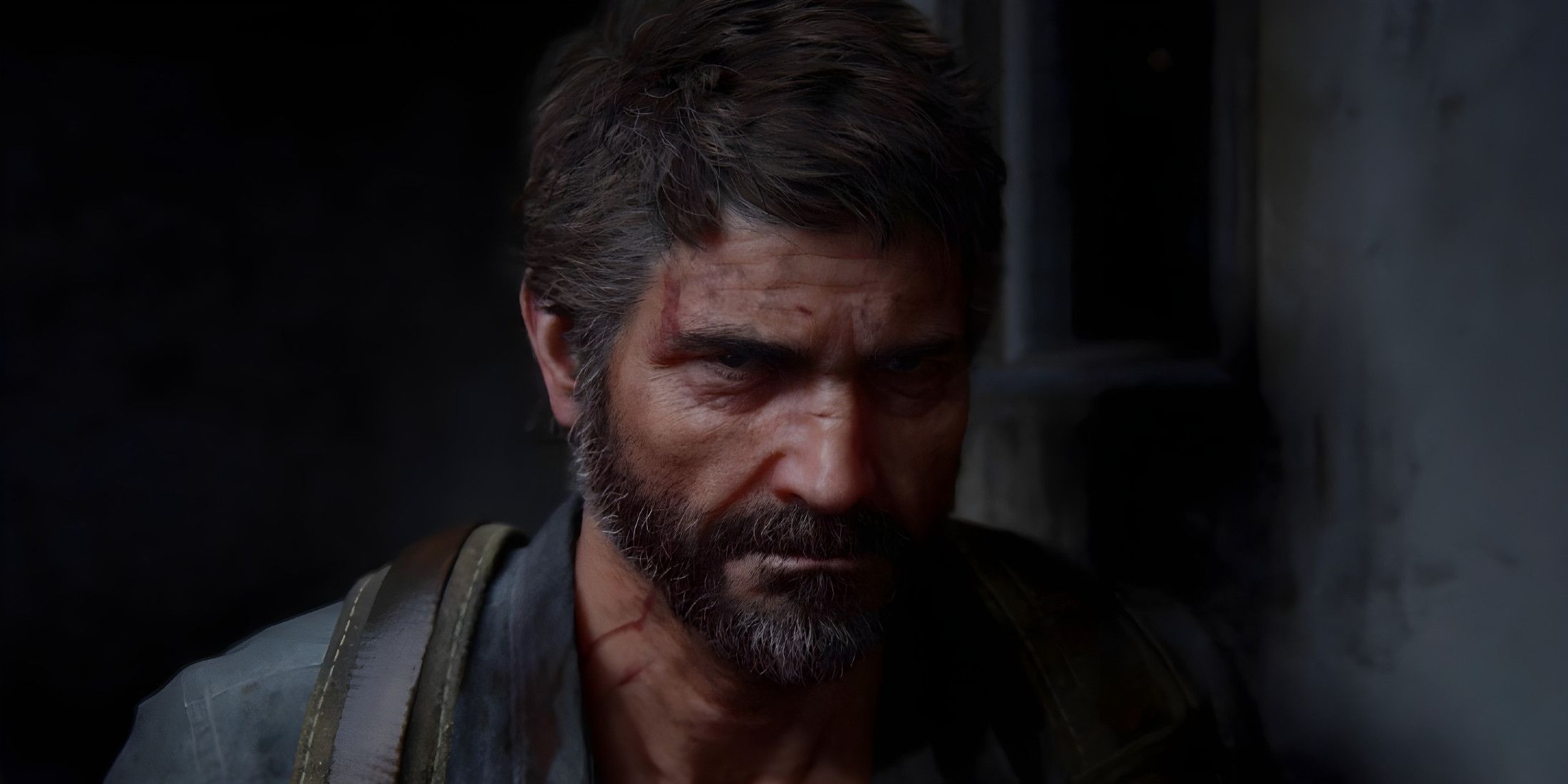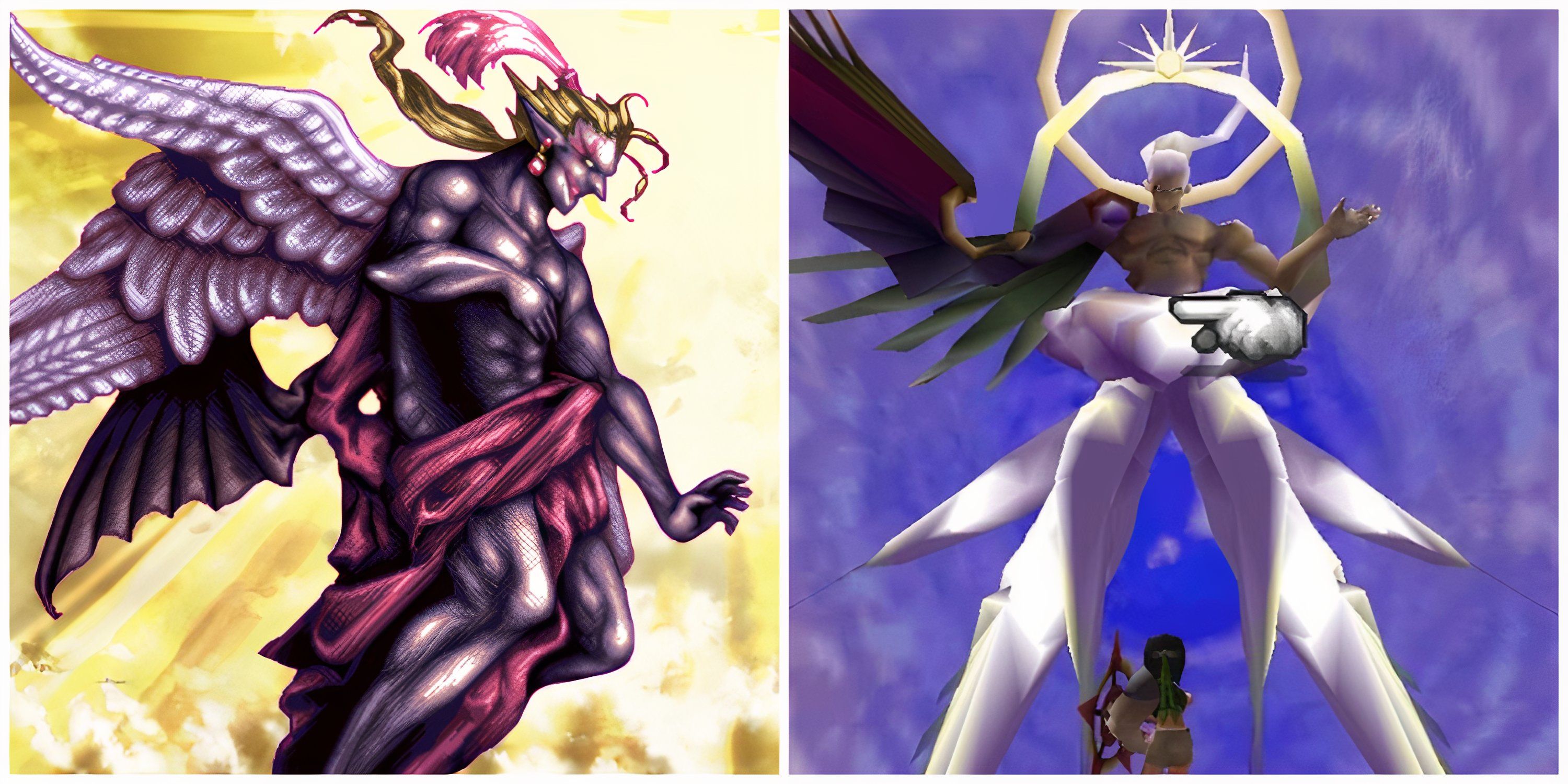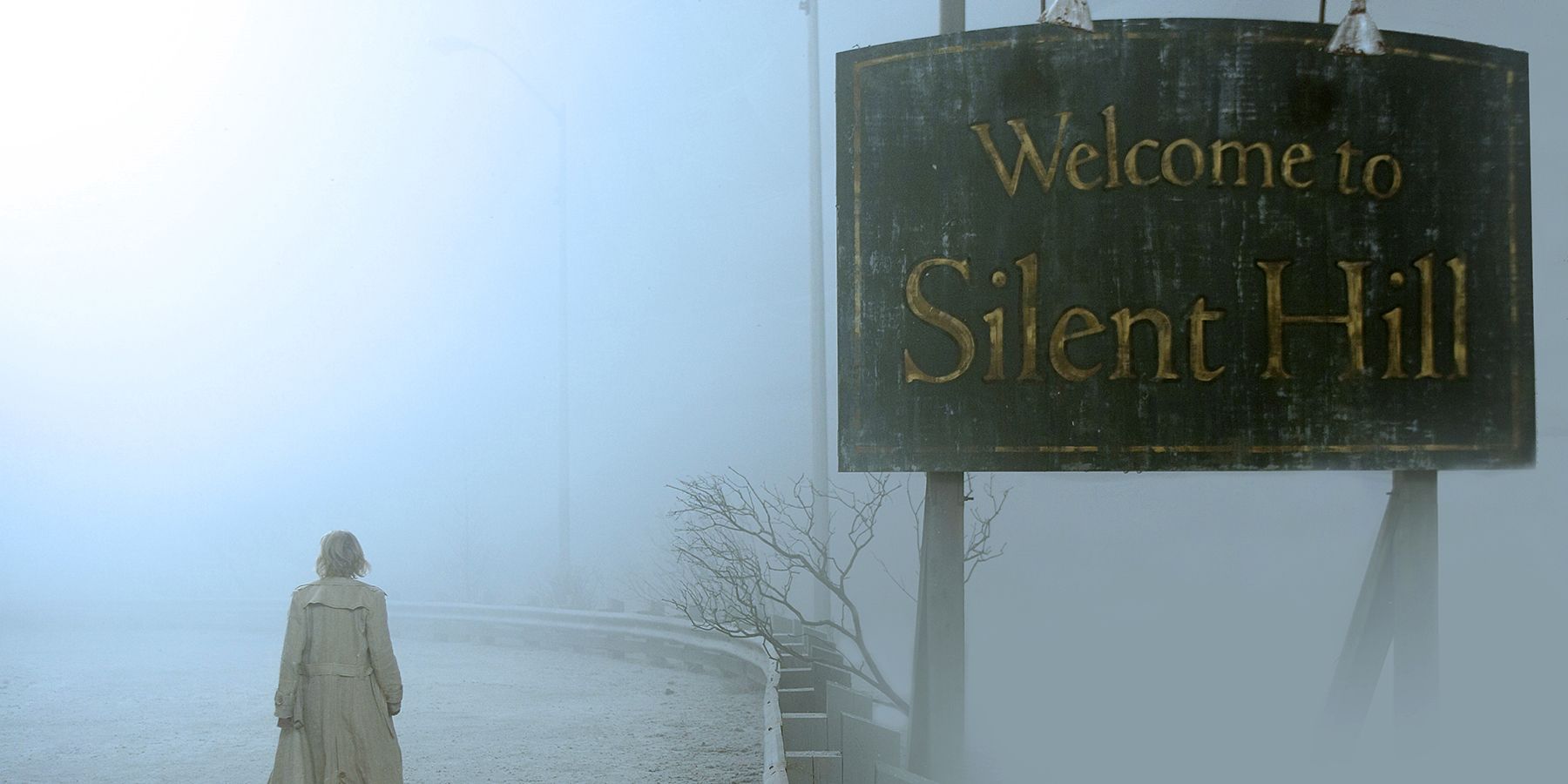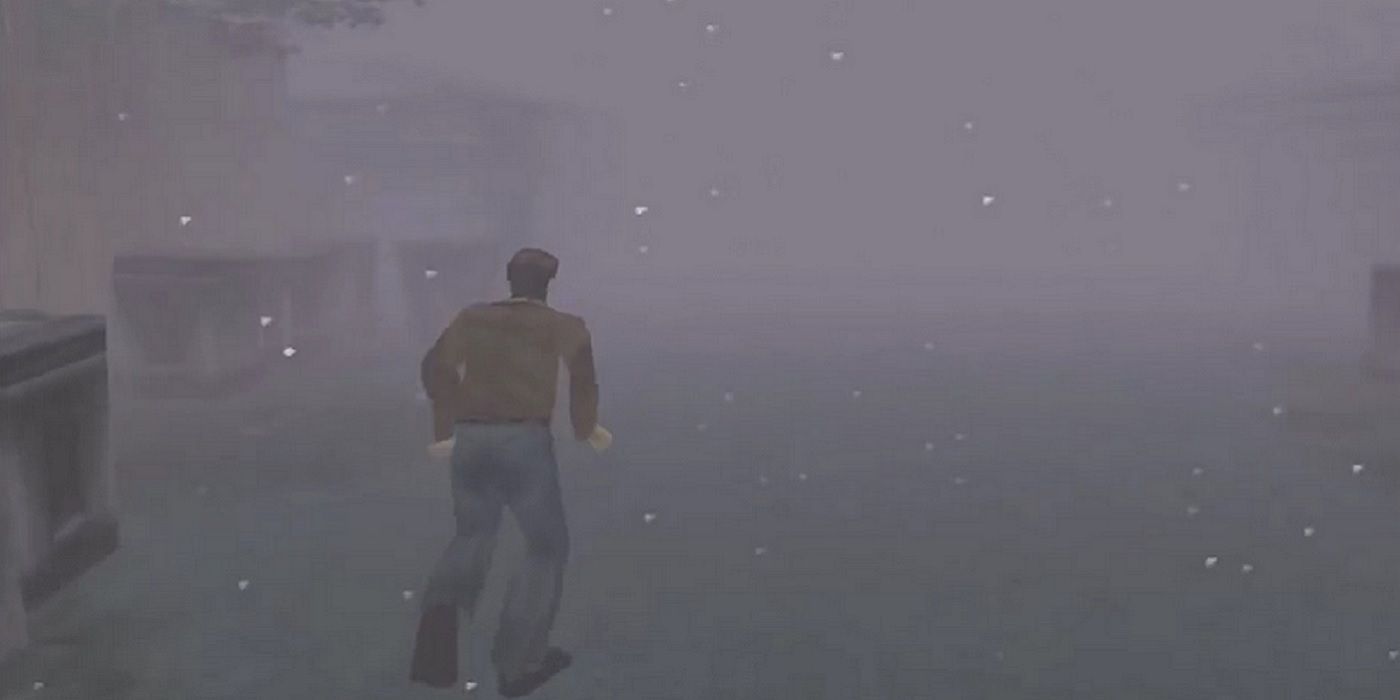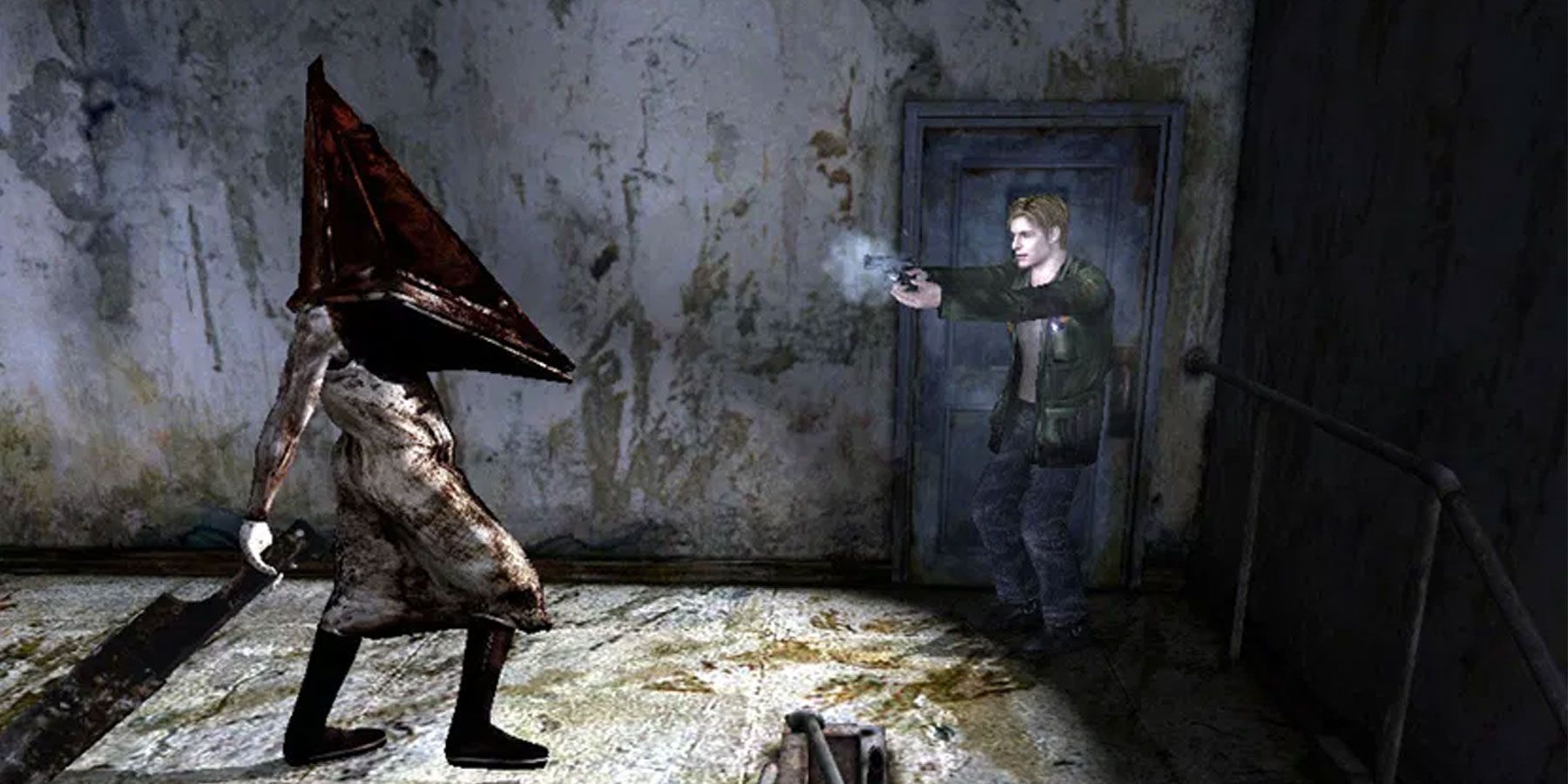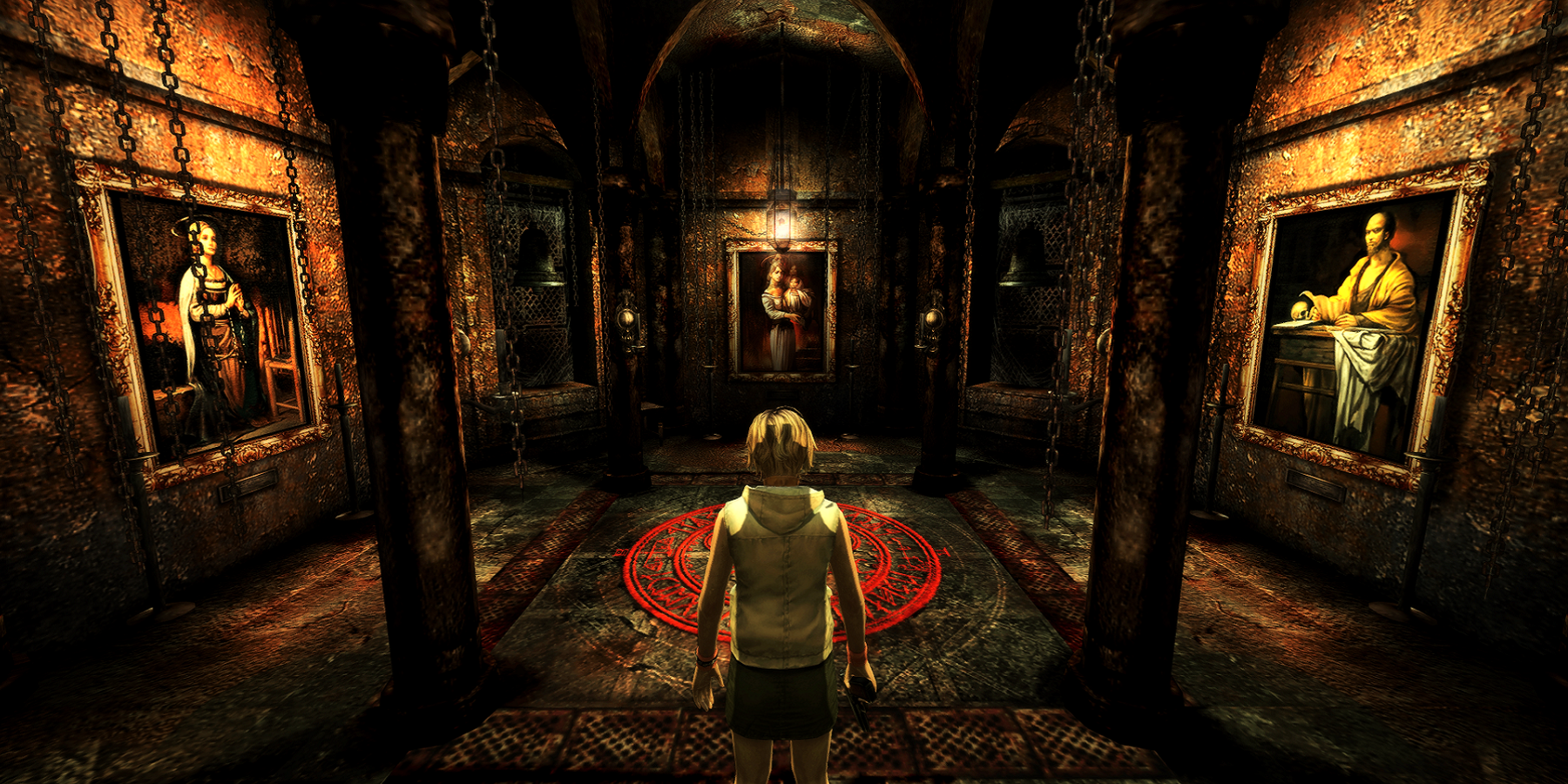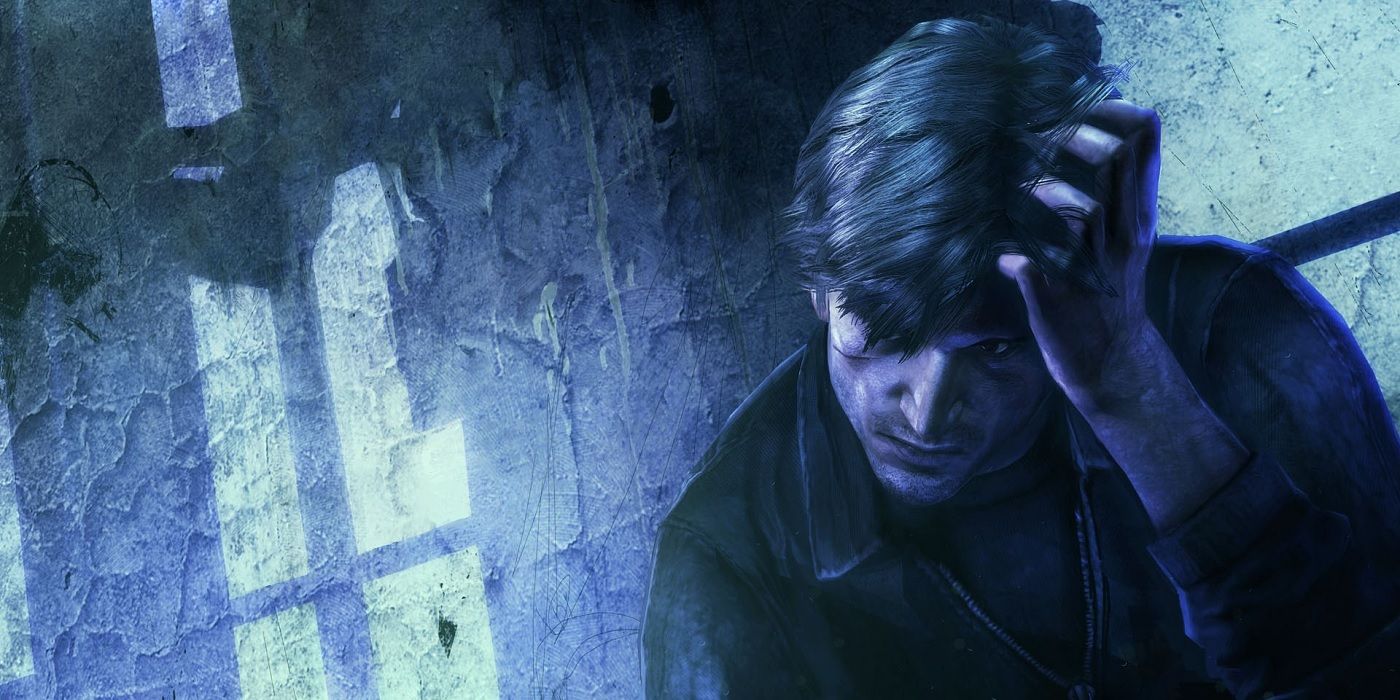The Silent Hill franchise lies dormant, with fans still disappointed with the cancellation of the Hideo Kojima Silent Hills project, and no mainline game released for almost a decade. Rumors of remakes, reboots, and even new movies continue to swirl, just like the fog that shrouds the infamous town.
Any long-running franchise with as many entries and incarnations as Silent Hill will inevitably feature some retcons, contradictions, and common misunderstandings. A history of Silent Hill games should help set the record straight on the true history of the sinister lakeside resort.
Team Silent: Silent Hill’s Golden Age
The first Silent Hill was released in 1999 for the Sony PlayStation, and was developer Konami’s attempt to match the success of rival Capcom’s new Resident Evil franchise. The game established several of the series’ enduring tropes by featuring an "everyman" main character — in contrast to an elite police officer like Resident Evil’s Chris Redfield — that is drawn to the quiet resort town of Silent Hill, in this case having survived a car crash on its outskirts. When Harry Mason awakes inside his stricken vehicle, his seven-year-old daughter is nowhere to be seen, so he stumbles into the nearby town to search for her.
Silent Hill was developed by a collection of artists and coders assembled from other projects that was dubbed "Team Silent," and infamously were considered at the time to be a "failing" group because of poor results on their other Konami endeavors. Because of low expectations for the game, the team was afforded a large amount of creative freedom, and this resulted in them crafting an experience that eschewed Resident Evil’s B-movie schlock. Instead, Silent Hill presented players with a disturbing, Lynchian horror game that has gone on to be one of the most influential titles of all time.
Alongside prominent Team Silent members like director Keiichiro Toyama, who went on to helm the Siren games, and art designer Masahiro Ito who created the iconic Pyramid Head (more on him later...), Akira Yamaoka was brought in as the game’s sound designer. His combination of bizarre audio effects, melancholy music, and punishing industrial noisescapes have become synonymous with the series, and he has even toured globally as part of a band playing the games’ renowned scores.
One of the game’s sound design masterstrokes featured the use of a broken radio, which would emit static whenever an enemy was approaching the protagonist. This was considered an ingenious scare tactic, and one of the reasons the game is considered one of the most frightening ever created. Players would fear an attack from one of Silent Hill’s hideous monsters long before the creature even appears on screen.
This mechanic worked in perfect tandem with another of the game’s innovations: The use of fog to reduce the player’s field of vision. While originally conceived as a solution to the original PlayStation’s technical limitations, this approach has also been praised for helping to create the game’s unique and oppressive atmosphere. Once again, this feature has gone on to become a series staple.
The success of Silent Hill spawned a sequel, and Silent Hill 2 was released in 2001. The game chronicles the attempts of hapless James Sunderland to find his wife in the titular town, after she wrote him a letter summoning to their "special place," despite having died years previously from an unspecified disease. While reviews at the time were fairly positive but not overwhelming, the game has gone on to be regarded as a horror masterpiece that regularly tops "greatest horror game of all time" lists.
Silent Hill 2 has been showered with praise for its surreal dialogue, disturbing, dreamlike visuals, and distressing plot twist. Its story was also lauded for dealing with mature themes, such as domestic abuse and bereavement, that were not commonly featured in games of that era. Its antagonist, Pyramid Head, has proven to be one of video gaming’s most enduring villains. The game also demonstrated that Silent Hill could be an effective setting for any number of harrowing tales, with the town’s ability to manifest the fears and dark secrets of its visitors providing a rich storytelling scope.
One common misconception about the original Silent Hill story is that the town was inspired by Centralia in Columbia County, Pennsylvania. It wasn’t. This idea was introduced in the first Silent Hill movie as part of the town’s backstory, reimagining the snow that falls during the first game as flakes of ash from the underground coal fires still burning beneath the streets.
While this was cleverly weaved into the first game’s existing mythology, which sees the haunted town physically manifesting the nightmarish delusions of a tortured child, it has caused some confusion amongst the game’s fanbase. This controversy was exacerbated when later titles adopted elements of the movie’s plot instead of the lore of the original Team Silent games, amongst many other perceived failings of the later releases.
Silent Hill Sequels, Movies… and Pachinko Machines
Two more sequels were developed by Team Silent, namely 2003’s Silent Hill 3 and 2004's Silent Hill 4: The Room. Silent Hill 3 revisited Harry Mason’s story and made his rescued daughter its hero, the only game in the series to feature a female protagonist. Silent Hill 4, meanwhile, was a more experimental title that had players assume the role of a man trapped inside his own apartment.
While receiving generally positive reviews, the team was subsequently disbanded when Konami decided it would outsource the development of future titles to western studios. This resulted in a slew of games that franchise fans consider to be inferior to the first four titles, although others believe some of the later Silent Hill games to be underrated.
The first of these western-developed titles was Silent Hill: Origins, originally a PSP exclusive when it was released in 2007. The game was criticized for its failure to add anything new to the ageing Silent Hill formula, as well as its dull protagonist, but was still positively reviewed. The game was released soon after the 2006 Silent Hill movie starring Radha Mitchell and Sean Bean, which despite some criticisms is considered one of the best film adaptations of a video game. At this point, and with multiple new projects in the works, the Silent Hill franchise still seemed to be on a positive upward trajectory.
However, the next several years saw the series rapidly grow rustier than its famous "otherworld." 2008's release Silent Hill: Homecoming brought the tainted town to the PS3 and Xbox, but was widely considered one of the series’ weakest entries. The plot was heavily criticized for taking inspiration from "splatter" movies like Hostel, and featuring a capable military veteran as its central character instead of the weak and wretched protagonists of other titles.
2009’s release on the Nintendo Wii was more positively received, with Silent Hill: Shattered Memories praised for its story (a reimagining of the first game), as well as for its innovative use of the Wii Remote as a mobile phone, a torch, and even a scalpel. The voice acting and visuals of the game were also commended, although the game’s brevity and straightforward puzzles received some criticism.
However, 2012 featured no less than four disappointing Silent Hill misfires. Sequel movie Silent Hill: Revelations was a critical and commercial flop, and the Silent Hill HD Collection was heavily criticized for being bug-ridden and glitchy, a result of Konami losing the original games’ source code.
The two new games released that year were also unpopular with fans. Not only was Silent Hill: Downpour the first game not to feature Akira Yamaoka’s talents, but Silent Hill: Book of Memories dispensed with the third person horror format altogether to present players with an unexpected dungeon crawler. Gamers and reviewers were underwhelmed with both titles, and this may have helped to fuel Konami’s decision to focus on mobile gaming and pachinko machines.
Despite this uncertainty, 2014 looked set to be a memorable year for Silent Hill fans when the mysterious free demo title P.T. turned out to be an interactive trailer for a new franchise installment. Silent Hills was to be developed by the stellar team of Hideo Kojima and Guillermo Del Toro, featuring the acting talents of Norman Reedus and the horrifying artwork of celebrated horror manga writer Junji Ito.
Sadly, as has been well documented, the project was cancelled by Konami. Its handling of the franchise since then has been deemed by some fans to be almost willfully insulting, with Silent Hill relegated to cameo appearances in other games like Dead By Daylight, or suffering an infamous reincarnation as a Silent Hill slot machine. Metal Gear Solid has received a similar treatment since Kojima's departure from Konami.
There are other spin-off media which Silent Hill franchise fans can go back and enjoy, such as 2001’s Silent Hill: Play Novel and 2007’s Silent Hill: The Arcade. However, the consensus is that P.T. was the first Silent Hill release since Team Silent were disbanded to reach the terrifying heights of its predecessors, and fans continue to bemoan its cancellation.
Endless, unconfirmed rumors of the resurrection of the Silent Hills project continue to rub salt into these wounds, and many feel that it would be better if the beloved franchise was allowed to finally rest in peace. Time will tell whether the horror behemoth will resurface once again or, like the town’s dark secrets, whether it will remain buried.

